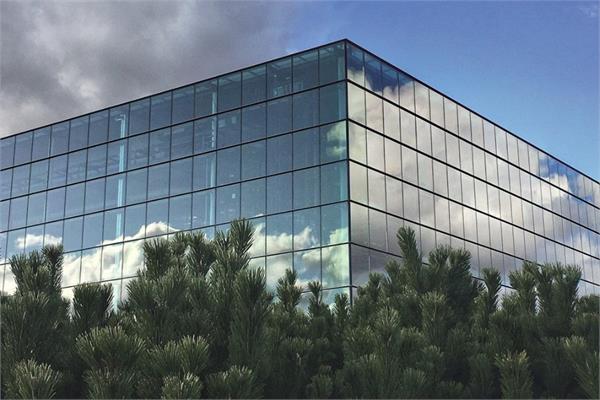
Fraunhofer researchers have developed two new coatings for glass windows that protect against solar radiation.
The Fraunhofer Institute for Silicate Research ISC in Würzburg and the Fraunhofer Institute for Organic Electronics, Electron Beam and Plasma Technology FEP in Dresden have developed two new sophisticated coatings for glass windows that darken in the sun.
As part of the Switch2Save project, researchers have been working on transparent coatings for windows and glass
façades using electrochromic and thermochromic materials that react to electricity and heat. By adding a variable, transparent dark tint to the exterior of the window, the coating stops the rooms from getting excessively hot because of solar radiation, therefore reducing the need of air conditioning and the consequently CO2 emissions.
“The electrochromic coating is applied to a transparent, conductive film which can then be ‘switched on’. Applying an electrical voltage triggers the transfer of ions and electrons, which darkens the coating and tints the window. On the other hand, thermochromic coating works passively. When a certain ambient temperature is reached, it reflects the heat radiation of sun,” explained Marco Schott, Group Manager of Electrochromic Systems at Fraunhofer ISC. “The windows don’t turn dark suddenly, but are gradually tinted over a few minutes.”
The electrochromic coating is applied to a polymer-based substrate, while the thermochromic coating on the other hand is applied to a thin glass substrate. Both wet chemical and vacuum coating processes are used in a cost-effective roll-to-roll manufacturing system. The switchable components are then laminated under vacuum onto a 4 mm thick sheet of window glass, that is integrated to an insulating glass unit thereafter. The electrochromic and thermochromic switchable elements are only 100 μm thick and less than 500 g per square meter, so they hardly add any weight to the windows and can be retrofitted in existing buildings without the need to alter the building structure.
An important step towards carbon neutrality
The energy consumption for these new solutions is very low: in optimal circumstances, electrochromic film only requires electricity for the switching process and a very low voltage is enough to initiate the tinting process. Thermochromic materials on the other hand do not require electricity at all, as they passively react to the heat generated by the sun. Since the European Green Deal will increase the demand for energy-efficient building technology in the near future (all buildings within the EU are expected to be carbon neutral by 2050), the new solutions represent a significant step forward.
“In warm regions of Europe, the cooling and heating energy demands of modern buildings can be reduced by up to 70 percent,” declared John Fahlteich, Switch2Save Project Coordinator and Head of the Research Group at Fraunhofer FEP. “We are in the process of installing the technology in the Pediatric Clinic of the second-largest hospital in Greece, in Athens, and an office building in Uppsala, Sweden. In both buildings, energy consumption will be monitored and compared for a whole year both before and after installation of the new windows. By doing this, we can demonstrate the real-life performance of the Switch2Save technology and can continue to test and refine the technology for different climate zones.”
The project consortium is currently focused on improving this innovative technology further: as a matter of fact, it is researching how electrochromic and thermochromic elements can be combined in a composite window. Further research objectives will include adapting the coating to curved glass forms and adding more colours to the existing options of blue and grey.